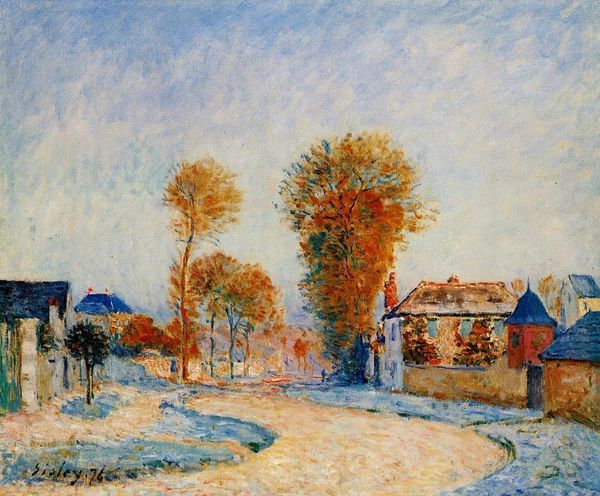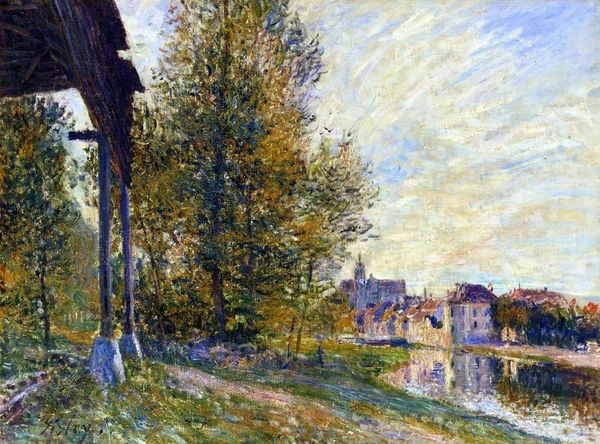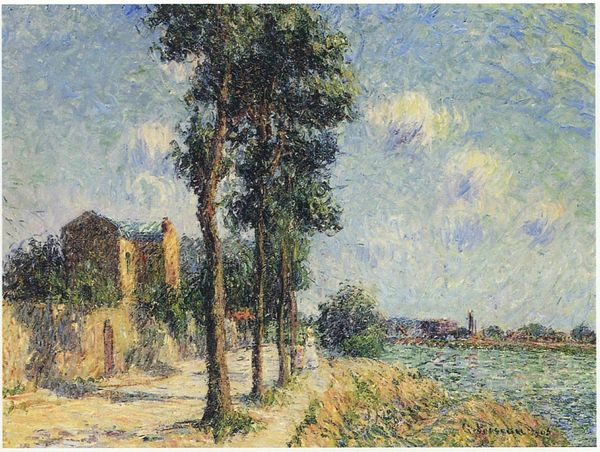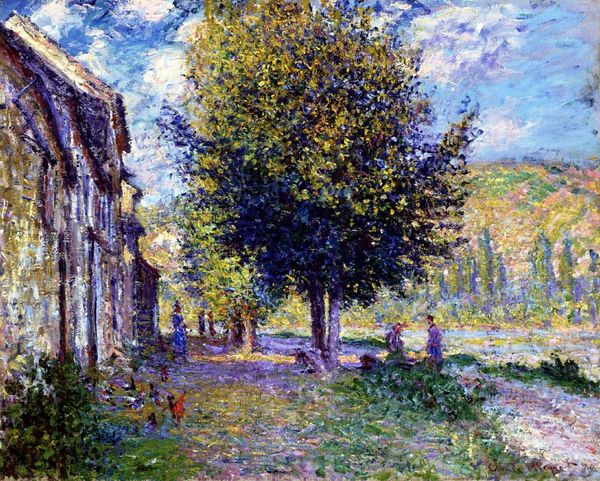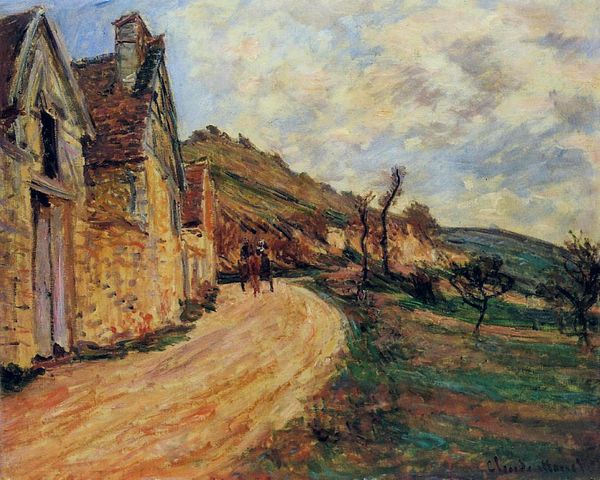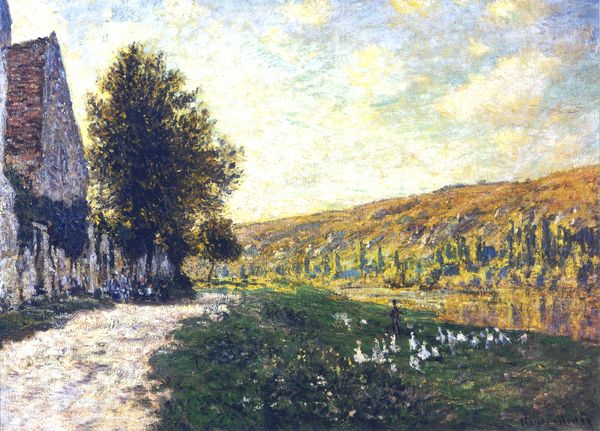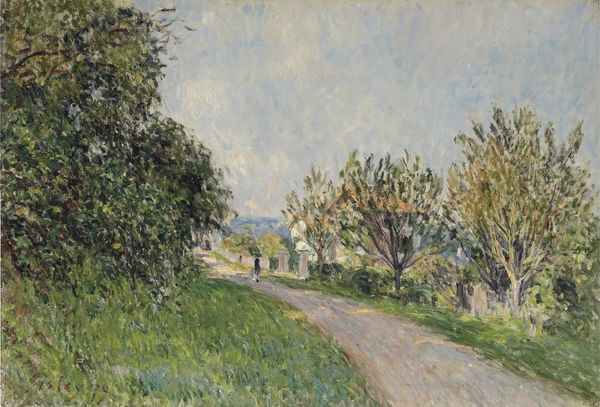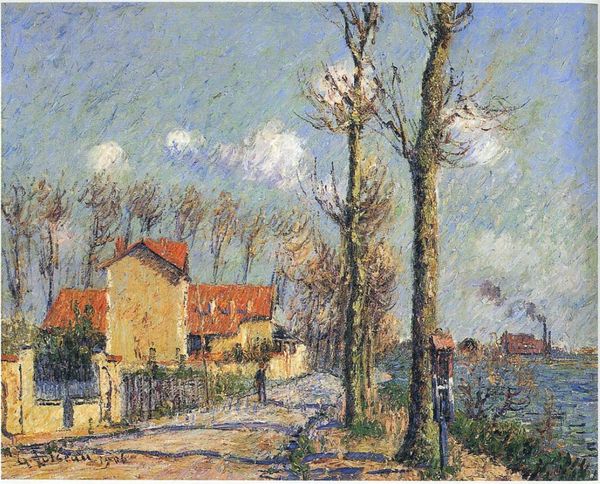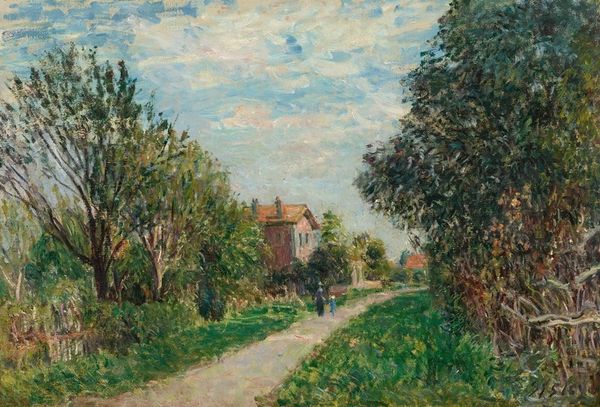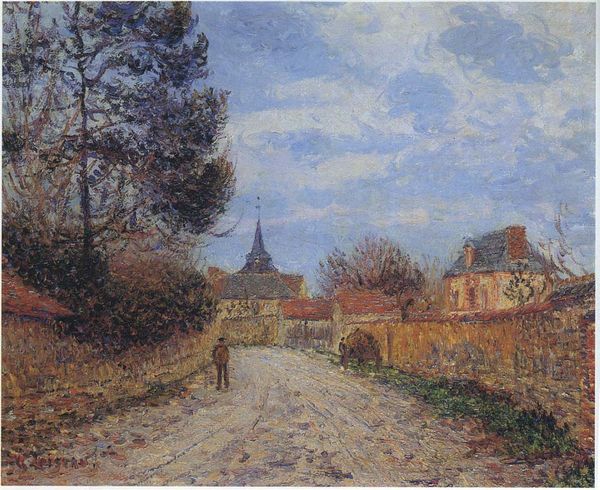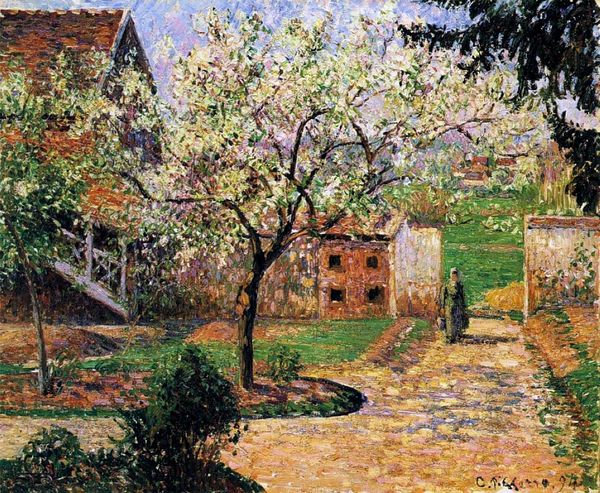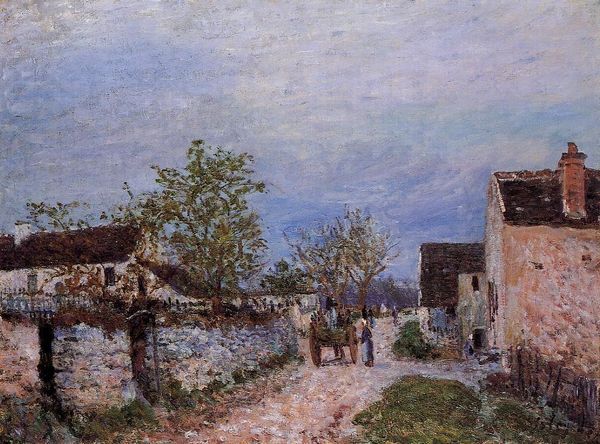
Copyright: Public domain
Claude Monet captured this scene of Lavacourt with oil on canvas, a quaint riverside village. Dominating the foreground, the path itself is a powerful symbol of the journey, not just physically, but also metaphorically, and it reminds us of the paths of life. The very composition invites you to follow the path from the foreground to the village on the horizon. This mirrors the ancient Roman roads, built not only for transit but also to project power and connect disparate parts of an empire, or even the mystical paths in illuminated manuscripts, guiding the soul toward enlightenment. Yet, unlike these structured routes, Monet's path is blurred, softened by the impressionistic touch, suggesting a more personal, subjective journey. The path evokes a sense of longing and the subconscious desire for connection, resonating deeply because it taps into our collective memories of travel, exploration, and the human quest for understanding our place in the world. It’s this emotional depth that makes the image so compelling. The path continues its cyclical journey, reappearing in modern art, literature, and film, each time adapting to reflect the hopes, anxieties, and the ever-evolving human condition.
Comments
No comments
Be the first to comment and join the conversation on the ultimate creative platform.

